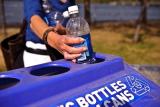EPA Collaboration with Europe
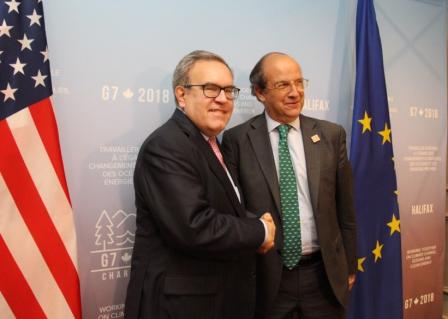 Acting Administrator Andrew Wheeler meets European Commission Director General for Environment, Daniel Calleja Crespo, at the G7 Environment Ministers meeting in Halifax, Canada in September 2018.
Acting Administrator Andrew Wheeler meets European Commission Director General for Environment, Daniel Calleja Crespo, at the G7 Environment Ministers meeting in Halifax, Canada in September 2018.The United States and Europe enjoy strong and long-standing economic and political relationships and face similar environmental opportunities and challenges. Working together enables us to address environmental impacts of joint concern, achieve common goals on both sides of the Atlantic and demonstrate leadership to help create a cleaner global environment.
EPA encourages and benefits from the exchange of experiences and expertise with European partners -- including the European Commission, EU Member States, other European countries, and multilateral organizations -- to strengthen transatlantic institutions, networks, and relationships and build capacity to solve environmental problems.
Key activities with Europe focus on:
- Improving Air Quality
- Increasing Resource Efficiency
- Strengthening Chemicals Management
- Enhancing Research Cooperation
Improving Air Quality
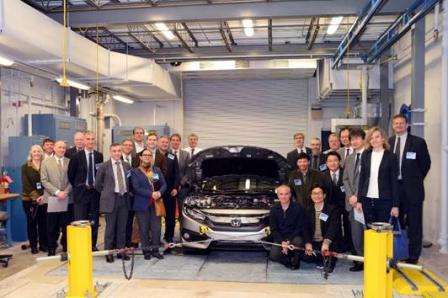 Transportation and health experts from 16 countries participated in the International Summit on Vehicle Emissions Testing, Compliance and Enforcement at EPA’s National Vehicle and Fuel Emissions Laboratory in Ann Arbor, Michigan. (April 2016)Vehicle Emissions: EPA is working with European and other international partners to reduce vehicle emissions and improve air quality and public health by strengthening regulatory programs for cars and trucks. Through aninternational dialogue, EPA and counterpart regulatory agencies in Europe and around the world discuss the importance of vigilant and comprehensive approaches to oversight and compliance with vehicle emissions standards, including varied and rigorous test cycles throughout a vehicle’s lifecycle. As part of this cooperation, European and other international partners have benefited from visits to EPA’s National Vehicle and Fuel Emissions Laboratory (NVFEL) in Ann Arbor, Michigan, a state-of-the-art facility that provides a wide array of analytical testing and engineering services for EPA’s motor vehicle, heavy-duty engine, and nonroad engine programs.
Transportation and health experts from 16 countries participated in the International Summit on Vehicle Emissions Testing, Compliance and Enforcement at EPA’s National Vehicle and Fuel Emissions Laboratory in Ann Arbor, Michigan. (April 2016)Vehicle Emissions: EPA is working with European and other international partners to reduce vehicle emissions and improve air quality and public health by strengthening regulatory programs for cars and trucks. Through aninternational dialogue, EPA and counterpart regulatory agencies in Europe and around the world discuss the importance of vigilant and comprehensive approaches to oversight and compliance with vehicle emissions standards, including varied and rigorous test cycles throughout a vehicle’s lifecycle. As part of this cooperation, European and other international partners have benefited from visits to EPA’s National Vehicle and Fuel Emissions Laboratory (NVFEL) in Ann Arbor, Michigan, a state-of-the-art facility that provides a wide array of analytical testing and engineering services for EPA’s motor vehicle, heavy-duty engine, and nonroad engine programs.
Transboundary Pollution: Since air pollution transcends geographic boundaries, EPA works closely with European partners to address transboundary impacts. Since 2005, EPA has co-chaired, along with the European Commission, the Task Force on Hemispheric Transport of Air Pollution (TF HTAP) Exit organized under the UNECE Convention on Long-Range Transboundary Air Pollution.Exit EPA also uses its strong partnerships with European experts to share approaches on technical, regulatory and policy aspects of effective air quality management.

Global Methane Initiative: Methane is a greenhouse gas that is over 20 times more potent than carbon dioxide. The Global Methane Initiative (GMI) is a voluntary, multilateral partnership that aims to reduce global methane emissions and to advance the abatement, recovery and use of methane as a valuable clean energy source. GMI focuses on methane mitigation projects that reduce emissions from animal waste, coal mines, landfills, wastewater treatment plants, and oil and gas operations.
The United States is a founding Partner of GMI, and EPA serves as the primary U.S. and administrative focal point for the global effort. The European Commission became a GMI Partner in 2007 and other European GMI Partners include Albania, Bulgaria, Finland, Georgia, Germany, Italy, Norway, Poland, Serbia, Russia, Ukraine, Turkey and the United Kingdom.
Methane experts and policy-makers from around the world met at the Global Methane Forum Exit in Toronto, Canada April 16-18, 2018 to discuss options for methane reduction and abatement activities.
ENERGY STAR is a voluntary program managed by EPA and the U.S. Department of Energy which helps consumers save money and protect the environment through the use of energy efficient products and practices.

Bilateral Agreement: To increase the use of the ENERGY STAR label for office equipment throughout Europe, EPA and the European Union signed an agreement in 2001. This agreement was renewed for several 5-year periods and expired on February 20, 2018.
- Learn more: EU ENERGY STAR Programme EXIT
ENERGY STAR also is implemented in non-EU countries including Switzerland, and in Norway, Iceland and Lichtenstein through the European Free Trade Association (EFTA). Exit
Increasing Resource Efficiency
EPA cooperates with European and other international partners to promote the sustainable use of resources and minimize waste streams in a variety of areas, including efforts to reduce wasted food and address marine litter.
Strengthening Chemicals Management
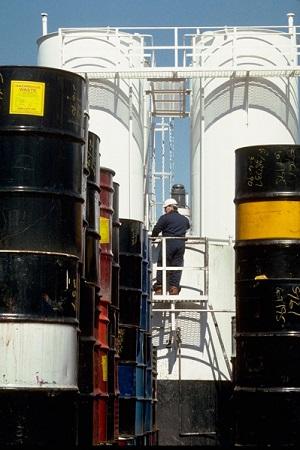
Regulatory Cooperation: An ongoing regulatory cooperation dialogue aims to help reduce risks from toxics in the U.S. and Europe. EPA and its counterparts in the European Commission and the European Chemicals Agency (ECHA) Exit share scientific and technical experience and expertise to enhance the sound management of chemicals. The dialogue also promotes regulatory best practices and information-sharing on areas of mutual interest. A Statement of Intent to enhance this cooperation was signed in December 2010. This Statement of Intent is supported by a rolling workplan that is updated periodically.
Legislation: Regulatory developments in Europe and the U.S. have made transatlantic cooperation on chemicals management more important than ever. The updated version of the U.S. Toxic Substances Control Act (TSCA) that was passed in June 2016 will enhance chemicals management efforts in the U.S. The EU’s Registration, Evaluation, Authorization and Restriction of Chemicals (REACH) program Exit has been in force since 2008.
Productive discussions between U.S. and European experts also take place in key international fora such as the Organisation for Economic Co-operation and Development (OECD).
Learn more:
Enhancing Research Cooperation
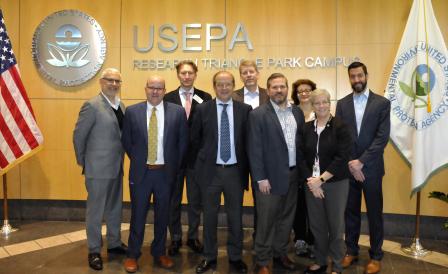 European Commission Director General for Environment Daniel Calleja Crespo visits with EPA’s Chief of Operations Henry Darwin, EPA Science Advisor Jennifer Orme-Zavaleta, and senior EPA scientists at the Research Triangle Park facility. (February 2019)
European Commission Director General for Environment Daniel Calleja Crespo visits with EPA’s Chief of Operations Henry Darwin, EPA Science Advisor Jennifer Orme-Zavaleta, and senior EPA scientists at the Research Triangle Park facility. (February 2019)Implementing Arrangement: EPA and the European Commission coordinate research and technical cooperation under an Implementing Arrangement which was signed in February 2007 within the framework of the U.S.-EU Science and Technology Agreement Exit managed by the U.S. Department of State. This document provides a framework and foundation for technical cooperation in a wide variety of fields, including air quality management, sustainable chemistry, nanotechnology, environmental health, and development of environmental indicators to measure and track environmental quality.
- Recently: In February 2019, a European Union delegation toured EPA’s Research Triangle Park facility and learned about EPA’s research in a number of areas including chemical testing, PFAS, decontamination, lead and arsenic at Superfund sites, microplastics, as well as next generation air quality monitoring.
Computational Toxicology: One area of particularly strong cooperation involves complementary research on computational toxicology, which ranks chemicals more efficiently based on risks to humans and the environment and provides an alternative to animal testing. EPA maintains ongoing technical relationships with experts at the European Commission, with EU Member States such as France, and within the OECD to facilitate data exchange and sharing of methodologies and approaches.
Air Quality Management: EPA air quality researchers have been working for many years with their counterparts from the Environment Agency and Department of Environment, Food and Rural Affairs (Defra) in the United Kingdom within the framework of the US-UK Collaboration Agreement on Air Pollution Exposure Science. The purpose of this long-standing collaboration, which was formalized in 2008, is to share approaches and expertise to ensure that the most recent and scientifically credible knowledge is available in the U.S. and the UK for predicting future air quality, as well as assessing, developing and implementing environmental regulations and decisions. The 11th technical meeting of this EPA-UK cooperative effort took place in Birmingham, UK in November 2018.

